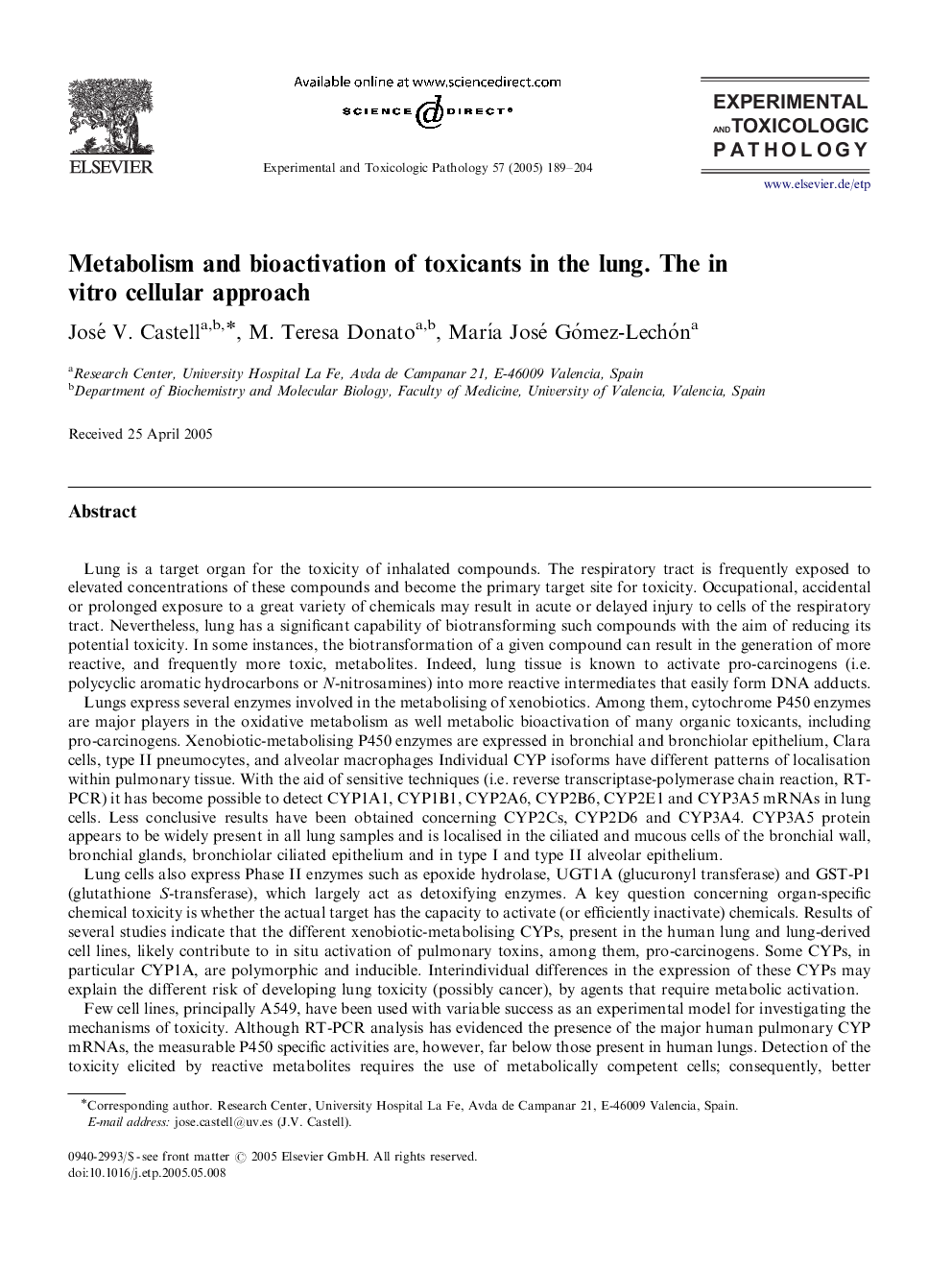| Article ID | Journal | Published Year | Pages | File Type |
|---|---|---|---|---|
| 9000463 | Experimental and Toxicologic Pathology | 2005 | 16 Pages |
Abstract
Few cell lines, principally A549, have been used with variable success as an experimental model for investigating the mechanisms of toxicity. Although RT-PCR analysis has evidenced the presence of the major human pulmonary CYP mRNAs, the measurable P450 specific activities are, however, far below those present in human lungs. Detection of the toxicity elicited by reactive metabolites requires the use of metabolically competent cells; consequently, better performing cells are needed to ensure realistic in vitro prediction of toxicity. Genetic manipulation of lung-derived cells allowing them to re-express key biotransformation enzymes appear to be a promising strategy to improve their functionality and metabolic performance.
Related Topics
Life Sciences
Agricultural and Biological Sciences
Animal Science and Zoology
Authors
José V. Castell, M. Teresa Donato, MarÃa José Gómez-Lechón,
